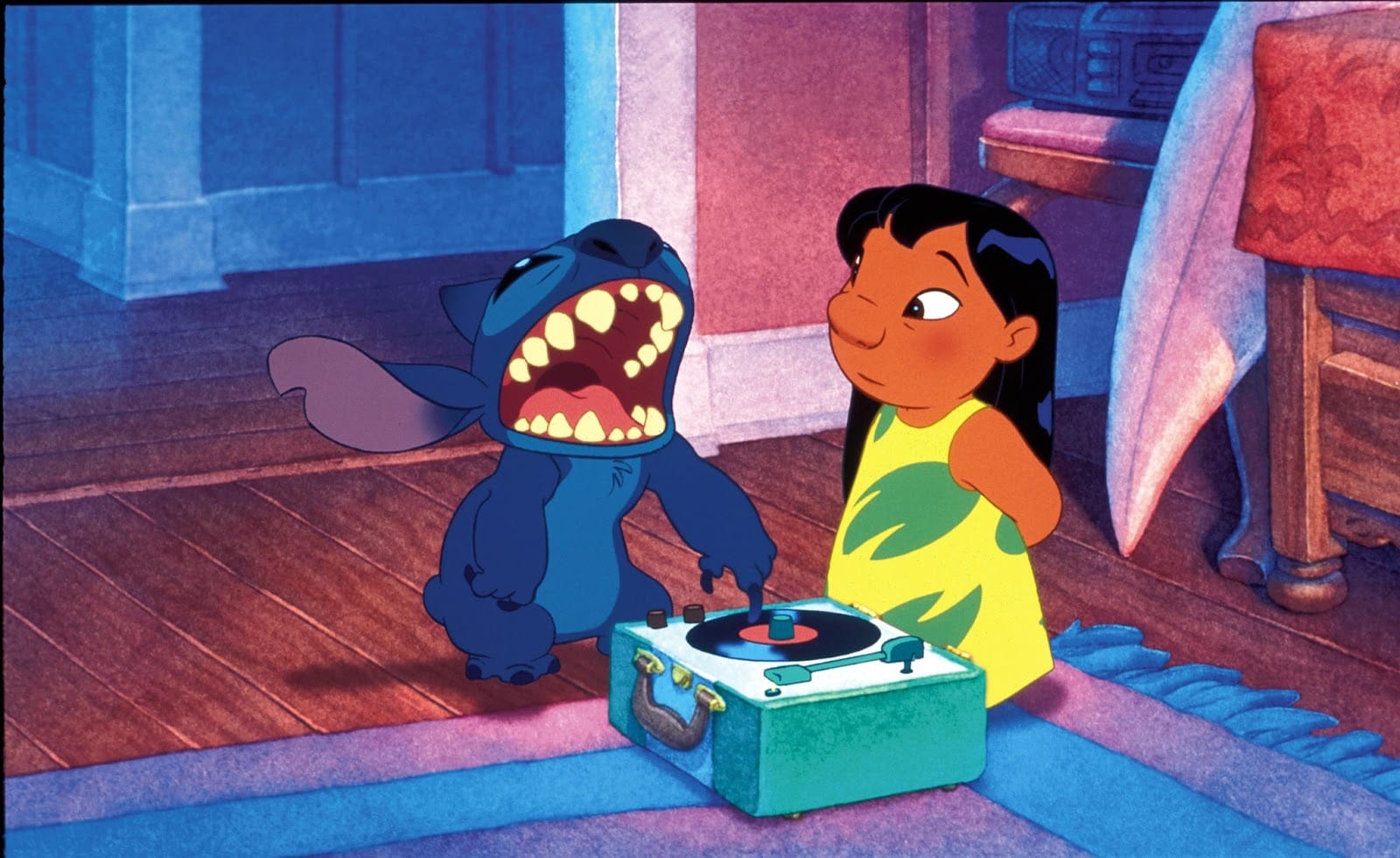Ohana means Family, and family means no one gets left behind or forgotten.
Lilo and Stitch (2002)’s core storytelling concept revolves around the idea of strong, familial bonds, AAPI cultural heritage, and the real effects of cultural capitalism on the people of Hawai’i. Its core concept is strongly implemented in the animated film and the subsequent animated franchise. The movie itself was praised for offering commentary on the colonization of Hawai’i through its tongue-in-cheek take on the tourism industry, as well as for representing a neurodivergent child in Lilo. Although never confirmed by the creators, many in the neurodivergent community relate to Lilo’s quirks and the isolation they cause, adopting her as a representation of a neurodivergent child in cinematic media. The idea of Lilo’s neurodivergence relates to how audiences react to and connect with certain characters, forming connections through the storytelling presented in cinematic media.
The above topics showcased in Lilo and Stitch highlight the importance of representation, and it teaches audiences how to relate to the struggles and realities of communities with different lived experiences than their own. The film itself has given its audience valuable lessons in family values and in empowering minority communities, which relate to the United Nations Sustainable Development Goals of Quality Education and Reduced Inequalities.
Whether a character in a film has certain traits or not is usually up to the viewers’ interpretation. Audiences often see themselves in the characters portrayed on screen, creating parasocial relationships with them. Cinema offers audiences the opportunity to be entertained while passively absorbing messages through storytelling, shaping society's ideologies, social structures, and human perception. As conceptualized by Marshall McLuhan, 'the medium is the message,' because “it is the medium that shapes and controls the scale and form of human association and action. The content or uses of such media are as diverse as they are ineffectual in shaping the form of human association.” Thus, the way characterization is delivered through mass media has allowed us to create associations between ourselves and ideologies, which, in turn, influence our actions.

In the case of Lilo and Stitch, specifically in the original animated film, we are presented with a simple story about two sisters living alone after the loss of their parents. They only have each other, and they are at risk of losing each other should Child Protective Services find the elder sister, Nani, unfit to care for her younger sister, Lilo. While Lilo lives in blissful ignorance of the reality of their situation, focusing more on the grief of losing their parents and then caring for their ‘dog,’ Stitch. Some core aspects of Lilo's personality, like her obsession with Elvis Presley and white tourists, as well as her difficulties communicating, are often seen as relatable to the neurodivergent community, specifically to people within the autism spectrum. Sydney Zarlengo explains Lilo's adoption to the autistic community as the perfect representation of autistic childhood, elaborating that autistic children are often misunderstood in their behavioural patterns, which are often interpreted as misbehaviour. Lilo’s other behaviours, special interests, and unique interpretation of friendships are also traits that are familiar to many with autism Despite this, Lilo’s neurodivergence was never confirmed by the creators, but that does not mean she cannot be an adequate representation for the community if the community feels she is.

By understanding children like Lilo and how they behave, people can learn to better support those who need special care. When analyzing Lilo in particular, Cinema Therapy argues that, when dealing with neurodivergent children, one must attempt to understand the world through their lens and slow down. Oftentimes, a relationship between a neurodivergent child and the world looks different than what is deemed ‘normal’; it is interpreted as something wrong. However, as shown in cases like Lilo’s relationship with the world of Lilo and Stitch, what one deems as ‘abnormal’ to some may be the only thing that works for a particular person.
Children presenting with ASD (Autism Spectrum Disorder) often present with difficulties in communication, having repetitive or rigid language usage, narrow interests paired with exceptional abilities for things that hold their interests, uneven language development, and poor nonverbal communication skills. They often demonstrate atypical behaviour and impulsivity, such as a special interest in their ‘favourite’ object or person, hyperarousal to their environment, and adverse responses to specific sounds or textures. By having representation of children with these traits in media through characters like Lilo, audiences are more able to empathize and understand the realities of life with non normative behavioural patterns, such as ASD.

At the end of the day, children deserve to be treated with kindness and care, regardless of their ailments. Realistic representations like Lilo serve as a reminder that we must treat our peers with kindness and respect. Neurological conditions like ASD are often stigmatized, leading to discrimination and status loss through being linked to ‘undesirable characteristics.’ These undesirable characteristics come from limited knowledge and understanding of disabilities like ASD, leading to individuals receiving reductionist labels and stereotyping that creates a negative stigma of the neurodivergent community. Presenting characters like Lilo through mass media allows audiences to better understand the disorder and reduce the stigma around it. Understanding of neurological disorders becomes more present in mass media; status loss and discrimination are perceived through behavioral outcomes of the stigmatization of said conditions, which will decrease over time. Films like Lilo and Stitch (2002) teach their audiences that all children deserve to be loved and cared for, not abandoned simply because they exhibit behaviours perceived as problematic.
Lilo and Stitch (2002) is a beautiful film about the unbreakable bond of found family and the rich cultural heritage of AAPI communities. The movie, in itself, teaches people to never give up on the people they love, along with a celebration of traditional Hawaiian culture. Films like Lilo and Stitch have allowed their audiences to learn to value people, culture, and families, as well as to form unbreakable bonds and to understand others with kindness.
